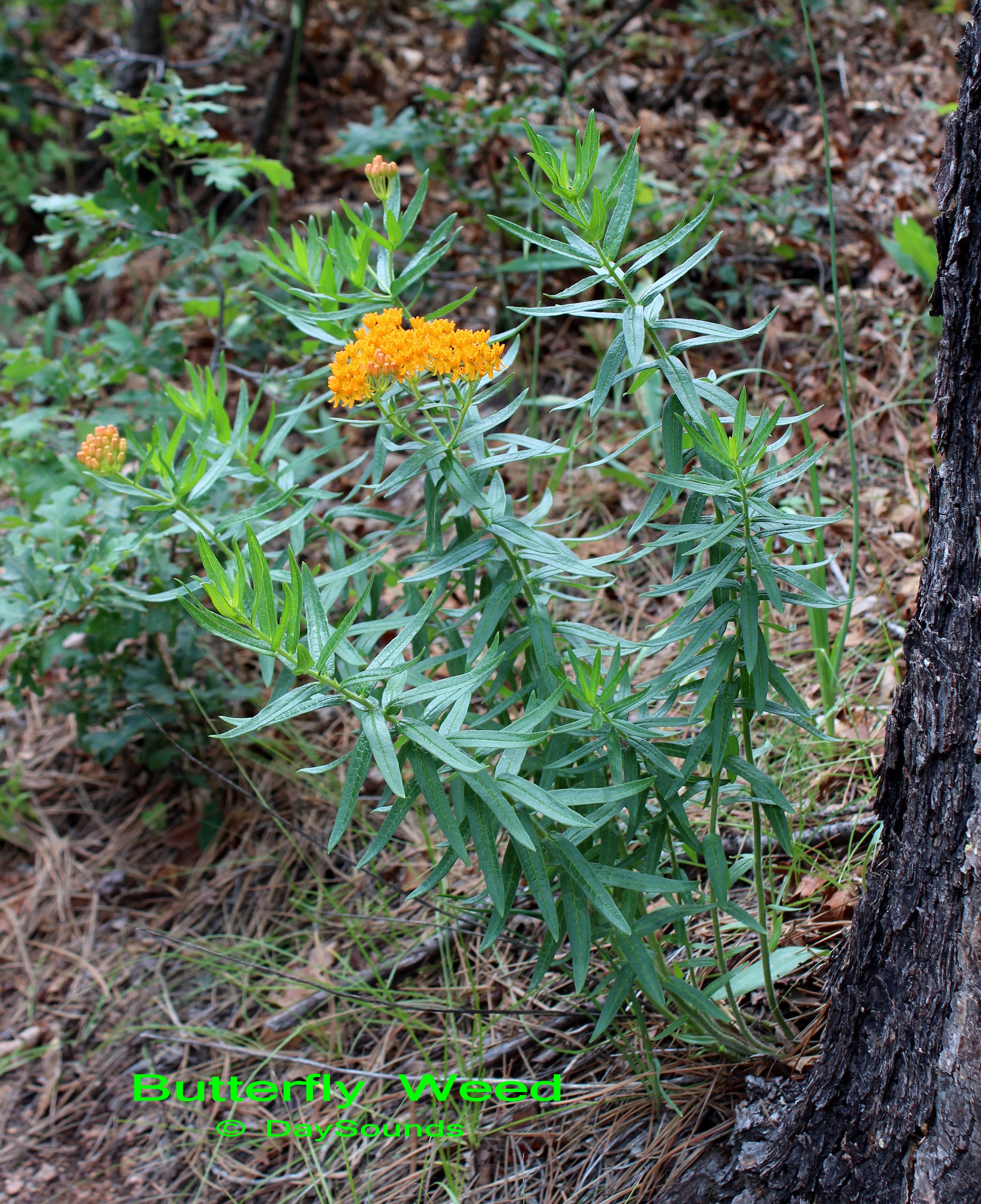by DaySounds © 2013-15

Butterfly Weed/Pleurisy Root ( Asclepias tuberosa)
greenish, not whitish (milky). It is a diuretic. A tea can be made with different parts of the
plant to fight diarrhea, and its roots can be chewed to improve respiratory system issues
--it is toxic if ingested regularly or in large quantities, though. Used externally, as a poultice,
it can help bruises and minor wounds heal faster. It is said that the sap applied daily on a
wart over a 2-4 week period helps to remove it.
Warning: It shouldn't be used by pregnant or nursing mothers as it can hurt the baby.
Flower Description, partially provided by Cathy Railton, director of the Starsmore Nature
Discovery Center in Colorado Springs, CO., USA: The Butterfly Weed flower is composed
of five green small sepals (hidden) and 5 orange petals (folded down) below a crown/corona
of 5 orange petal-like (petaloid), hood-like appendages, which are the expansions of the
fused filaments. Each hood has an orange horn (appendage) curving upward from inside,
arching over the center of the flower, toward the stigma. The 5 anthers are attached to the
sides of the stigma. The pollen is kept within waxy sacks in the pollinarium--which
sometimes trap the pollinator or its legs for good.
©DaySounds
PO Box 746497
Arvada, CO 80006
USA